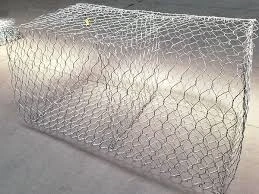-
 Phone:
Phone: -
 Email:
Email:

Understanding the Differences Between Barbed Wire and Razor Wire for Security Fencing
The Evolution and Importance of Barbed Wire and Razor Wire
Barbed wire and razor wire have become synonymous with security and boundary marking in modern societies. These innovative fencing solutions were first developed in the late 19th century and have since evolved to serve various purposes, including agriculture, military, and urban security.
The Evolution and Importance of Barbed Wire and Razor Wire
Razor wire, on the other hand, emerged later, specifically designed for heightened security needs. Composed of sharp steel blades or barbs affixed to a wire strand, razor wire is particularly effective in deterring intruders and enhancing the security of premises. Unlike traditional barbed wire, which can sometimes be climbed over, razor wire presents a formidable barrier due to its sharp edges. This type of fencing is widely used in military installations, prisons, and high-security areas where unauthorized access is a serious concern.
barbed wire razor wire

The applications of barbed and razor wire extend beyond mere security. In the agricultural sector, barbed wire continues to play a crucial role in managing livestock. It is commonly used to subdivide pastures, control grazing patterns, and protect crops from deer and other wildlife. In urban environments, both types of wire fencing are used to secure vacant lots, protect construction sites, and deter vandalism.
However, the use of these fencing solutions does come with ethical considerations. While they provide security and protection, the presence of barbed and razor wire can also symbolize exclusion and unrest, especially in sensitive political contexts. Fences adorned with razor wire can evoke images of confinement and segregation, drawing attention to the fine line between security and oppression.
In conclusion, barbed wire and razor wire have played critical roles in shaping security practices across various sectors. Their development marks a significant advancement in fencing technology, reflecting the ongoing need for protection and boundary demarcation in an ever-changing world. As societies continue to grapple with issues of security and freedom, the debate surrounding the use of these materials will likely persist, prompting discussions about safety, ethics, and the balance between protection and accessibility.
-
Uncompromised Slope Safety with Advanced Rockfall Protection NettingNewsJun.09,2025
-
The Smart Choice of Chain Link FenceNewsJun.09,2025
-
Securing the Future with Time-Tested Barbed Wire ProtectionNewsJun.09,2025
-
Reliable and All-Season Fencing with Premium Hexagonal Wire MeshNewsJun.09,2025
-
High-Performance Binding Solutions with Premium Loop Tie WireNewsJun.09,2025
-
Durable, Flexible, and High-Performance Baling Wire for SaleNewsJun.09,2025
-
Unveiling the Versatility of Hexagonal Wire MeshNewsMay.21,2025








